1 June
Far East, Burma
Brigadier Mike Calvert, commander of the Chindits’ 77th Brigade, reaches Lakum near Mogaung.
3 June
Far East, India
The 64-day Battle of Kohima ends with the remnants of the Japanese 31st Division withdrawing in good order. It is the lack of supplies, rather than the attacks of the British and Indian forces, which has forced the Japanese to fall back. The fighting at Kohima has been among the most savage of the whole war.
3-4 June
Italy, Rome
Adolf Hitler reluctantly gives Field Marshal Albert Kesselring, the German commander-in-chief in Italy, permission to abandon Rome. Covered by expert rearguard actions of IV Parachute Corps, the German Fourteenth Army pulls back across the Tiber River. US troops enter the city on the 5th - the first Axis capital to be captured.
6 June
Western Front, France
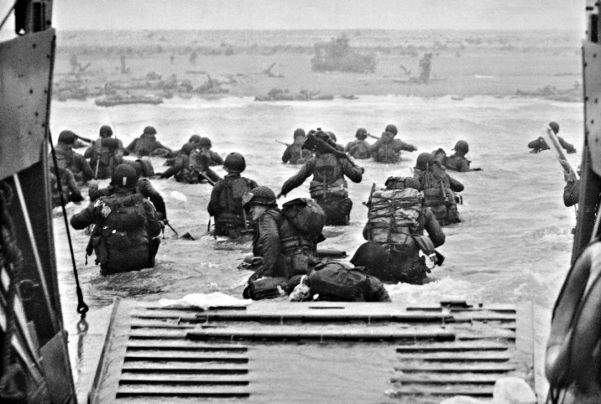
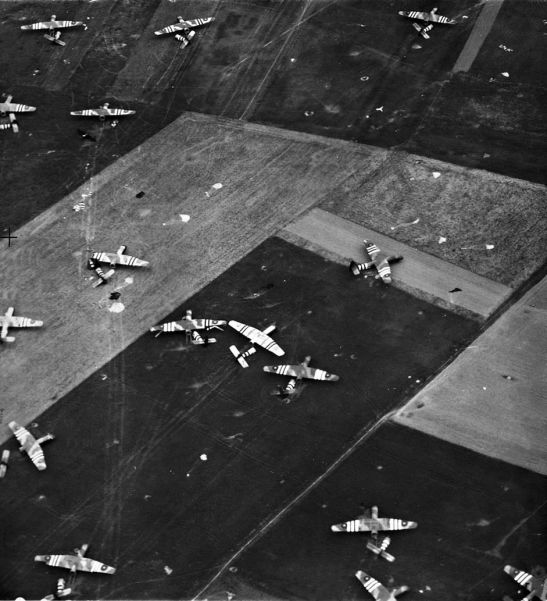
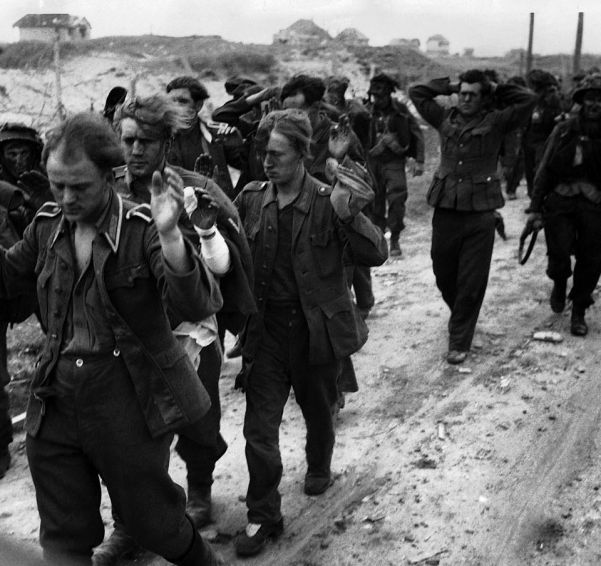
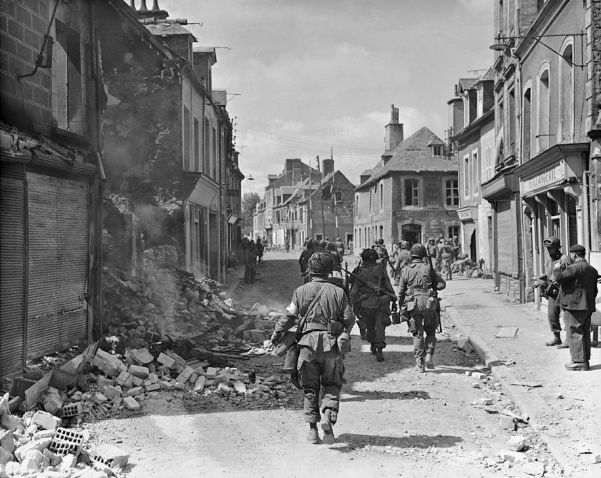
The Allies launch the greatest amphibious operation in history. The statistics for the invasion force are staggering: 50,000 men for the initial assault; over two million men to be shipped to France in all, comprising a total of 39 divisions; 139 major warships used in the assault, with a further 221 smaller combat vessels; over 1000 minesweepers and auxiliary vessels; 4000 landing craft; 805 merchant ships; 59 blockships; 300 miscellaneous small craft; and 11,000 aircraft, including fighters, bombers, transports, and gliders. In addition, the invasion force has the support of over 100,000 members of the French Resistance, who launch hit-and-run attacks on German targets.
D-Day, the Allied invasion of Normandy, code-named Operation Overlord, begins with the assault of three airborne divisions - the US 82nd and 101st on the right flank of the US forces, and the British 6th Airborne on the left flank of the British - while seaborne forces land on five beaches. Utah Beach is the target of the US 4th Infantry Division (part of the US VII Corps); Omaha Beach is the target of the US 1st Infantry Division (part of the US V Corps); Gold Beach is the landing site of the British 50th Infantry Division (part of the British XXX Corps); Juno is the target for the Canadian 3rd Infantry Division (part of the British I Corps); and the British 3rd Infantry Division (also part of the British I Corps) is tasked with seizing Sword Beach.
The initial parachute and seaborne landings have mixed results: on Utah resistance is slight and the troops are off the beach by 1200 hours; on Omaha the lack of specialized armor means the Germans can pin down the troops on the beach, with great slaughter; on Gold and Juno the specialized armor of the British and Canadians allow the troops to get off the beaches quickly, and by the afternoon they are probing inland toward Bayeux and Caen; and on Sword the troops are able to link up with airborne units that have been dropped farther inland.
This is fortunate, for it is between Juno and Sword that the Germans make their one major counterattack, comprising a battlegroup of the 21st Panzer Division. However, it is defeated. By the end of the day, at a cost of 2500 dead, the Allies have a toehold in German-occupied Europe.
9-10 June
Eastern Front, Finland
The Soviets, in an effort to drive the Finns back to the 1940 Frontier and compel them to make peace, launch a major offensive with two armies. The offensive is preceded by a sustained barrage from 5500 guns and 880 rocket-launchers. The attack shatters the Finnish Front and, on the 10th, Marshal Karl von Mannerheim, Finland’s military leader, orders a retreat to a stronger defensive line.
10 June
Western Front, France
The 2nd SS Panzer Division Das Reich, moving from its base at Toulouse to Normandy, has been the constant target of members of the French Resistance. In retaliation, the small town of Oradour-sur-Glane is chosen as the target for a brutal reprisal, one intended to be a lesson to the people of France. The men of the village are herded into barns, the women and children into the church, and the whole town is set on fire. Those who flee are machine-gunned. In total, 642 people are killed, with only 10 able to feign death and escape.
11 June
Pacific, Marianas
US Task Force 58 begins a heavy bombardment of Saipan, Tinian, Guam, Rota, and Pagan prior to an assault on the islands, the occupation of which will allow the US forces operating in the area to sever the lines of communication to Japan’s units operating in the southern Pacific.
13 June
Western Front, France
Lieutenant Michael Wittmann, company commander of the SS 501st Heavy Tank Battalion, destroys 27 tanks and armoured vehicles of the British 4th Country of London Yeomanry in a tank battle around the village of Villers-Bocage, Normandy.
Pacific, Japan
The Japanese Combined Fleet is alerted to prepare for Operation A-Go, which is intended to lure the US Pacific Fleet to one of two battle areas - either the Palaus or the Western Carolines - where it can be destroyed. These areas are chosen because they are within range of the greatest possible number of Japanese island air bases, thereby counterbalancing US aircraft carrier superiority.
15 June
Pacific, Marianas
The US Northern Attack Force arrives off Saipan. In response, the Japanese Combined Fleet is ordered to gather. On the island itself, landings are conducted on the west coast by the US 2nd and 4th Marine Divisions.
Air War, Japan
The iron and steel works at Yahata on the mainland is bombed by B-29s of the US 20th Army Air Force, which is operating from bases in China.
16 June
Far East, Burma
The 22nd Division, part of Lieutenant General Joseph Stilwell’s Chinese force, has taken Kamaing, the first of his three objectives - the others being Mogaung and Myitkyina.
18 June
Western Front, France
US forces reach the west coast of the Cotentin Peninsula, Normandy, trapping the German garrison in Cherbourg. Hitler has ordered the garrison to fight to the death.
Pacific, Marianas
The warships of US Task Force 58 rendezvous west of Saipan.
19-21 June
Pacific, Philippine Sea
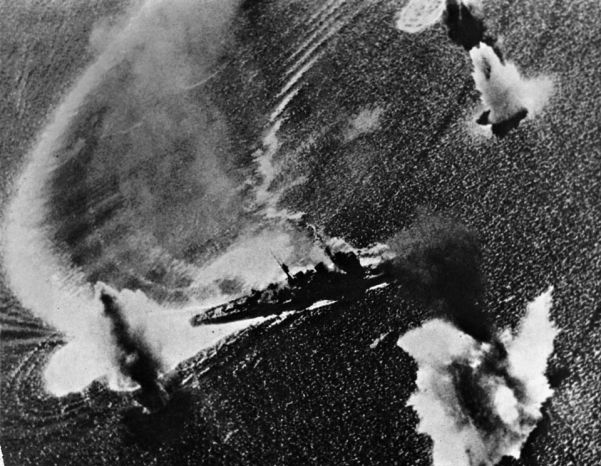
On hearing of the US assault on Saipan, the Japanese Combined Fleet, under Admiral Jisaburo Ozawa, puts to sea immediately with five heavy and four light carriers, five battleships, 11 heavy and two light cruisers, and 28 destroyers. The US 5th Fleet, under Admiral Marc Mitscher’s tactical command, numbers seven heavy and eight light carriers, eight heavy and 13 light cruisers, and 69 destroyers. Aircraft on either side total 573 Japanese (including 100 based on Guam, Rota, and Yap) and 956 American.
Ozawa’s search planes locate the 5th Fleet at daybreak, 300 miles (480 km) from his advance element of four light carriers and 500 miles (800 km) from his main body. Ozawa launches an attack in four waves, while Mitscher, on discovering the enemy aircraft, sends out his interceptors.
Disaster strikes Ozawa immediately, for US submarines sink the carriers Taiho and Shokaku, and US fighters shoot down many of his aircraft. In the Battle of the Philippine Sea, nicknamed the ‘Great Marianas Turkey Shoot’ by the Americans, the Japanese lose 346 aircraft and two carriers. US losses are 30 aircraft and slight damage to a battleship. Meanwhile, Mitscher’s bombers neutralize the Japanese airfields on Guam and Rota. On the 20th, Mitscher launches 216 aircraft, which sink another carrier and two oil tankers, and seriously damage several other vessels. While the Americans lose 20 aircraft, Ozawa loses another 65, although many US aircraft are forced to ditch into the sea. Ozawa’s costly battle deals a crippling blow to the Japanese naval air arm, not least through the loss of 460 trained combat pilots.
20 June
Italy, Umbria
The British XXX Corps opens its attack on the Albert Line, one of a series of German rearguard positions in northern Italy, south of Lake Trasimeno on either side of Chiusi. The fighting is hard; the Germans give ground grudgingly.
22 June
Politics, Germany
Foreign Minister Joachim von Ribbentrop visits Helsinki to try to tie Finland more tightly to Germany.
Far East, India
The British 2nd Division reach the defenders of Imphal, but Japanese resistance continues.
22-26 June
Far East, Burma
The Chindits’ 77th Brigade begins attacking Mogaung from the southeast. Following bitter fighting, it finally falls on the 26th.
23 June
Eastern Front, Belorussia
The Red Army launches its Belorussian offensive. Four Fronts - 1st Baltic, 1st, 2nd, and 3rd Belorussian, comprising 1.2 million men in all - attack the German divisions of Army Group Center. The Soviets have a four-to-one superiority in tanks and aircraft.
26 June
Western Front, France
The British launch Operation Epsom, a drive west of Caen. Troops and tanks of the 15th, 43rd, and 11th Armored Divisions make good initial progress, but are then halted following very heavy losses.
29 June
Western Front, France
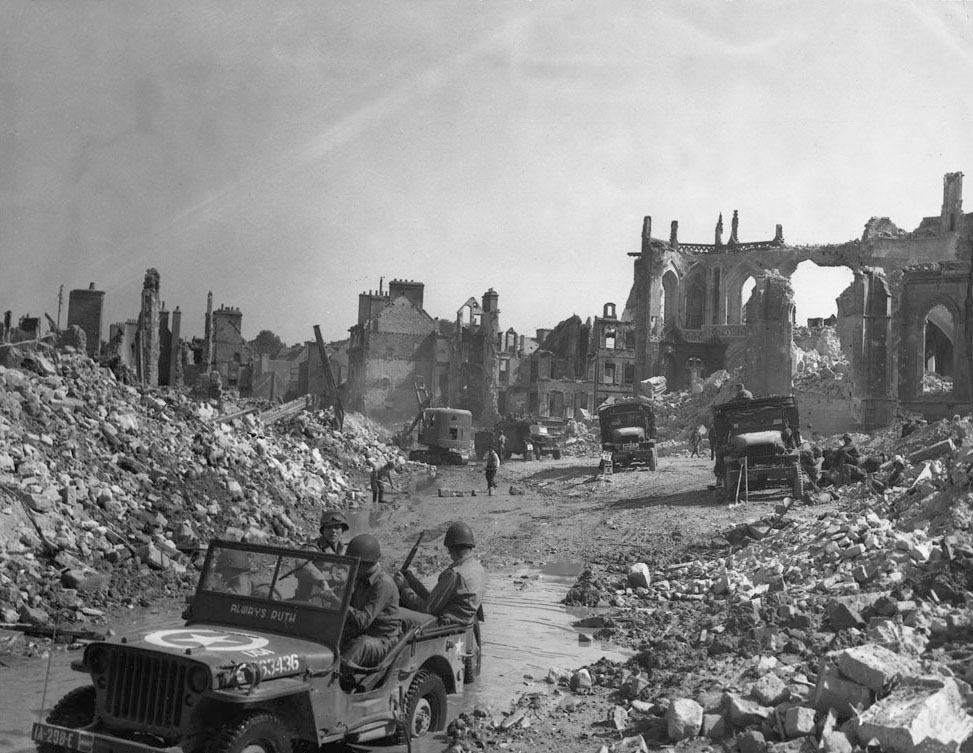
The port of Cherbourg finally surrenders to forces of the US VII Corps. The cost to the US has been 22,000 casualties, while 39,000 Germans are taken prisoner.
30 June
Technology, Germany
The Germans have formed the first operational unit equipped with Messerschmitt Me 262 jet fighters. The unit will be deployed to France in the near future.
Air War, Britain
To date, 2000 German V1 ‘Flying Bombs’ have been launched against England, mostly against London. In response, the British have increased the number of anti-aircraft guns, fighter aircraft, and barrage balloons.
